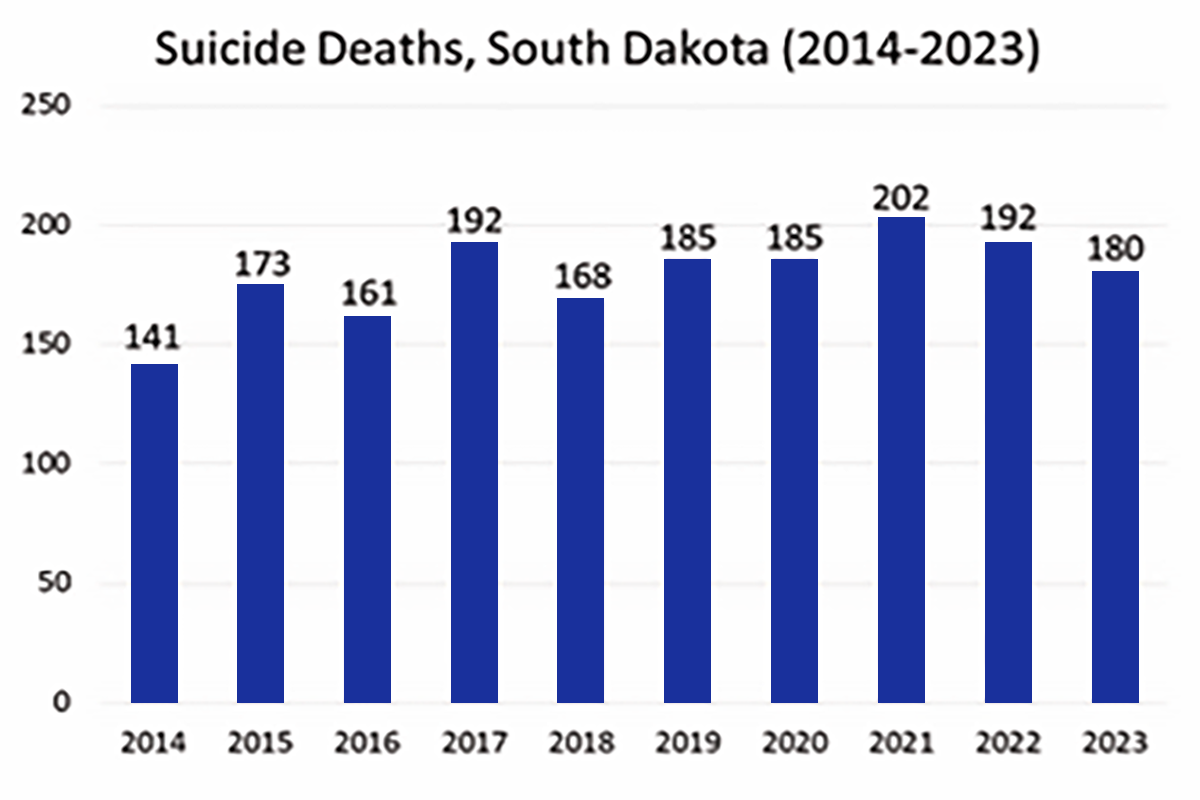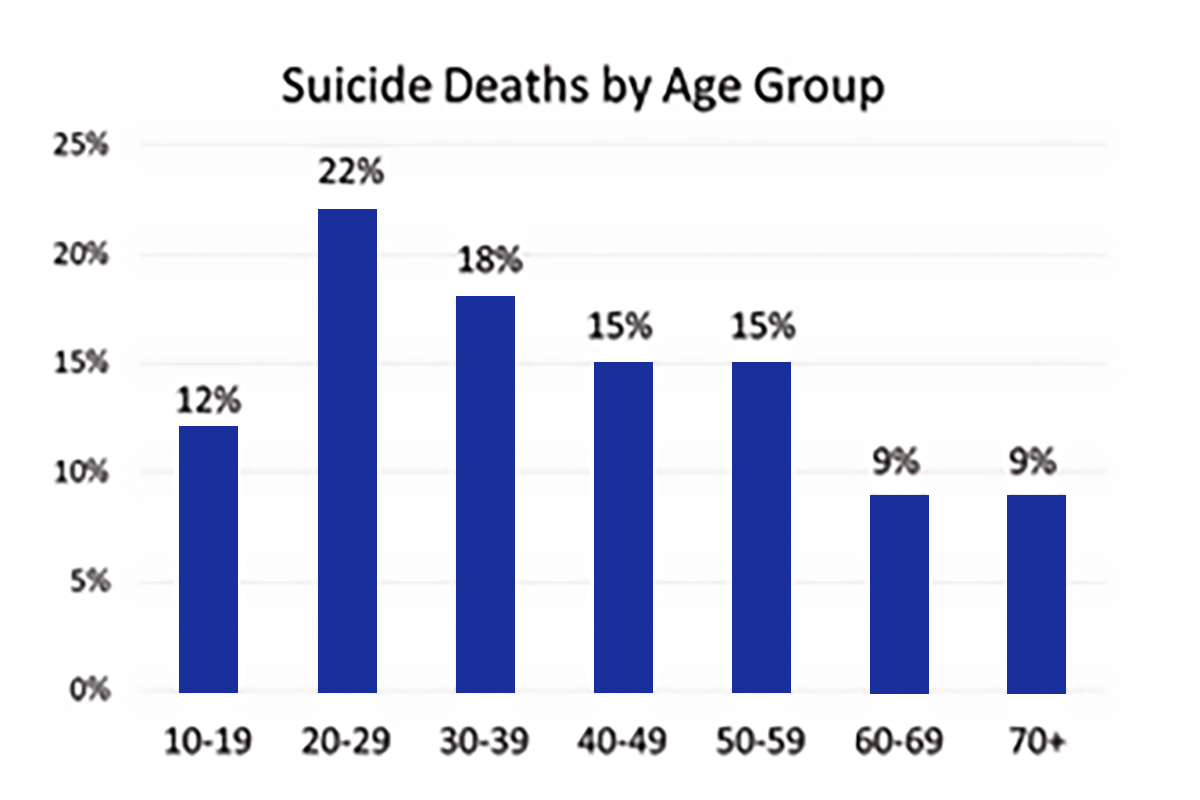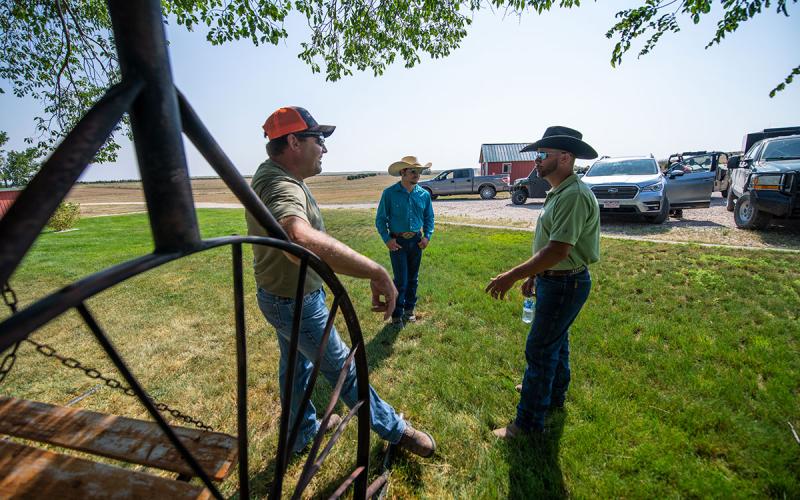Let us take a moment to highlight a serious public health problem that has had lasting, harmful effects on individuals, families, and communities in our rural state. According to the National Council for Wellbeing, about 1.8 million adults living in rural areas reported having serious thoughts of suicide in the previous year. South Dakota is a rural state with just under 1 million people, with 95% of South Dakota cities under 5,000 people in population. In South Dakota, suicide is the leading cause of death for individuals aged 20-29 years, while the 30-59 age group accounts for about 48% of suicides in our state.


High-Risk Populations
According to South Dakota Suicide Prevention the following populations are considered high risk for death by suicide: farmers and ranchers, veterans, American Indians, college students, older adults, youth and parents.
Warning Signs and Symptoms
While the warning signs can vary depending on the issue at hand and age group, we often see an overall sense of feeling hopeless, worthless and lack of purpose, dreams, goals or plans for the future. This can be evident with threatening to hurt or kill oneself, along with talking, writing or posting on social media about death, dying or suicide. Behavior like acting recklessly or engaging in risky activities, increasing alcohol or drug use or giving away money or prized possessions can be another sign. Finally, withdrawing from family, friends or society with dramatic changes in mood and/or demonstrating rage and anger or seeking revenge can be problematic.
How to Talk With Someone

When it comes to mental health, listening is helpful. You could start with, “Something seems to be bothering you. Do you want to talk about it?” Or a simple statement like, “I am concerned about you.” Empathetic listening can calm, reassure and even help de-escalate tense situations. A quiet, non-judgmental presence builds trust and shows support without rushing to solve the problem. Nonverbal responses like nodding and making eye contact can be helpful. Focus on conveying empathy and not changing the person or perspective, slow down the conversation, and use relaxed body posture and language. Empathetic responses include:
- “Let’s see if I have this right. Are you saying that…”
- “Can you tell me more about…?”
- “If I heard you correctly, you said that…Is that right?”
(Source: The Quiet Power of Empathic Listening, National Council for Mental Wellbeing. 2017.)
Prevention and Resources
Suicide is preventable, and everyone has a role to help save lives and create healthy and strong individuals, families, and communities in South Dakota. While its causes are complex and determined by multiple factors, the goal of suicide prevention is simple: reduce risk factors and increase factors that promote resilience. Resources include the following:
- 988 Suicide & Crisis Lifeline: Call, Chat or Text 988
- Farm & Rural Stress Hotline: 1-800-691-4336
- South Dakota Suicide Prevention
- HelpLine Center
You can connect with our SDSU Extension Experts that provide mental health resources for youth and adults in South Dakota.

